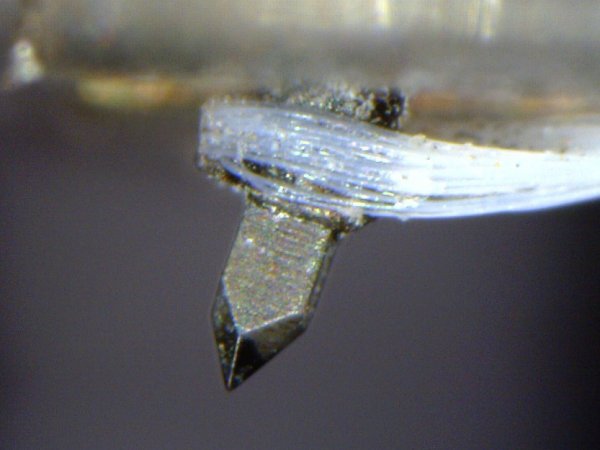As I would expect... if you calculate record thickness differences at the spindle hole and use the geometric formula from before, the angle differences are very tiny, hence the small arm travel.
Right. On clean well recorded and pressed records and with the A90, the correct spot is very narrow, probably .002 inch max on the ET2 scale. On cartridges with less contact area, or not totally line-contact (perhaps a contour instead) the range is much broader.
It's too bad records and pressings aren't more uniform, though. In my last series of listening tests with this new ground-up configuration/calibration, well done recordings such as Bill Evans "Waltz For Debbie", Alison Krauss & Union Station "So Long So Wrong" and of course many others I can easily find the idea spot for SRA, and it's quite a sharp little notch, but with a general broader effect of greater detail surrounding it up and down. Very clean and pleasant to listen to.
However, raise the cutting level a few dB and (at least) this Ortofon A90 gets cloudy and less distinct. The SRA broad range is there but not as obvious, and it's almost impossible to clearly delineate the precise point of best alignment. I have a number of records that behave like this on the A90, but not on the ZYX. In the case of the Alison Krauss album, of the four sides, side 2 is cut noticeably hotter that side 1 (on which SRA position is very clear and there's not a hint of mistracking), but side 2 has many areas which mistrack, mostly on vocal silbilance, and the general presentation of the side is nothing like Side 1. Side 3 is excellent, Side 4 is borderline, getting worse toward the inside diameter. It behaves like tracing errors in high lateral amplitude and higher frequency complex sounds. The current VTF is 2.5g which behaves the best in these regards. 2.3g (recommended) is similar but not quite as good overall, and anything below that is not acceptable. Azimuth is perfect (equal opposite channel crosstalk) and cantilever alignment is right on. So is overhang. These are the same or very similar results I've had with the two A90's across multiple complete ground-up installs.
Another extremely bad performing record is the QRP pressing of Cat Steven's Tea For The Tillerman. Yet it plays perfectly (except a hint of tracing difficulty at one place on side 2) with the ZYX. Other records where the A90 performs well, includes all the Sheffield direct recordings, many samplers and others.
Unless someone has some suggestions to try that I haven't already, I'm officially giving up on this cartridge and moving on (to what, unknown). The two A90's I've had just don't cut it for me.
BTW, all this haze from mistracking and tracing problems is clearly evident in a spectrum analyzer as out of band audio frequencies (>35khz to 60k or higher). Some records are low pass filtered at around 20.5k when cut, so on those the filter edge is quite clear in spectrum view, and any content above that is stylus chatter of one sort or another.
--Bill





